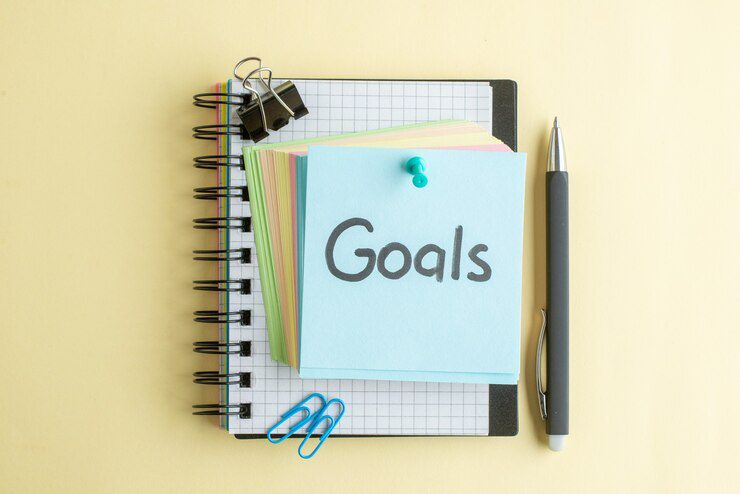In the world of Personal Development, goal setting is often hailed as the cornerstone of success. Whether you’re aiming to climb the corporate ladder, start your own business, or improve your health, having clear and achievable goals is essential. But setting goals is only half the battle; the real challenge lies in achieving them. This ultimate guide will walk you through the process of setting and reaching your goals, all while keeping your Personal Development on track.
Why Goal Setting Matters
Goal setting is not just about ticking off a to-do list; it’s a powerful tool that can drive your Personal Development forward. According to a study by Dr. Gail Matthews, a psychology professor at the Dominican University in California, individuals who write down their goals are 42% more likely to achieve them than those who don’t. This statistic highlights the significance of not just setting goals but also writing them down.
Goals offer direction, drive, and a sense of purpose. They provide targets to aim for and help you track your progress as you advance. When you set clear and specific goals, you create a roadmap for your Personal Development journey.
How to Set Effective Goals
Setting goals might seem straightforward, but there’s an art to doing it effectively. The most successful goals are SMART: Specific, Measurable, Achievable, Relevant, and Time-bound.
Specific: Clearly define what you want to accomplish. Instead of stating, “I want to get fit,” specify, “I want to lose 10 pounds in the next three months by working out three times a week.”
Measurable: Make sure you can track your progress. In the example above, the number of pounds you want to lose is a measurable goal.
Achievable: Set goals that are challenging yet realistic. Losing 10 pounds in three months is achievable; aiming to lose 50 pounds in the same timeframe might not be.
Relevant: Your goals should align with your broader Personal Development objectives. If improving your health is a priority, then losing weight is relevant.
Time-bound: Set a deadline for your goals. Having a timeline creates a sense of urgency and keeps you focused.
The Importance of Visualization and Affirmation
Once you’ve set your goals, it’s time to reinforce them. Visualization and affirmation are powerful techniques in the Personal Development toolkit. Visualization involves mentally picturing yourself achieving your goals, which can help you stay motivated and focused. Affirmations, on the other hand, are positive statements that you repeat to yourself to reinforce your goals.
For example, if your goal is to land a new job, you might visualize yourself taking the interview and receiving the job offer. You might use affirmations such as, “I am confident and capable,” or “I will succeed in my job search.” These strategies can help you maintain a positive mindset and keep your goals front and center.
Breaking Down Goals into Actionable Steps
Achieving big goals can be daunting, but breaking them down into smaller, actionable steps can make the process more manageable. For instance, if your goal is to write a book, start by setting smaller goals like outlining your chapters, writing 500 words a day, and editing one chapter a week. Every small step you take moves you closer to achieving your bigger goal.
Tracking Progress and Staying Accountable
In Personal Development, accountability is key. Tracking your progress helps you stay on course and make necessary adjustments. You can use tools like journals, apps, or spreadsheets to monitor your progress. Regularly reviewing your goals and the steps you’ve taken will help you stay motivated and focused.
Another effective strategy is to share your goals with a friend, mentor, or coach. Having someone to hold you accountable can greatly boost your likelihood of success. In fact, Dr. Matthews’ study found that those who shared their goals with a friend were 76% more likely to achieve them.
Overcoming Obstacles
No Personal Development journey is without its challenges. Obstacles will inevitably arise, but the key is to stay resilient and adaptable. When you face setbacks, treat them as chances to learn and grow, rather than viewing them as failures. Adjust your goals or action steps if necessary, but don’t give up. Keep in mind that persistence is frequently the key factor that separates success from failure.
Celebrating Success
Lastly, celebrate your accomplishments, no matter how minor they may seem. Celebrating success boosts your motivation and reinforces the positive behaviors that led to your accomplishment. Whether it’s treating yourself to something special or simply taking a moment to acknowledge your progress, celebrating is an essential part of the Personal Development process.
Conclusion
Goal setting is a powerful tool for driving Personal Development and achieving your dreams. By setting SMART goals, visualizing success, breaking down goals into actionable steps, staying accountable, and celebrating your successes, you can transform your aspirations into reality. Remember, the journey of Personal Development is ongoing, and with the right strategies in place, you’re well on your way to becoming the best version of yourself.
So, what are you waiting for? Start setting those goals and watch your dreams unfold!







